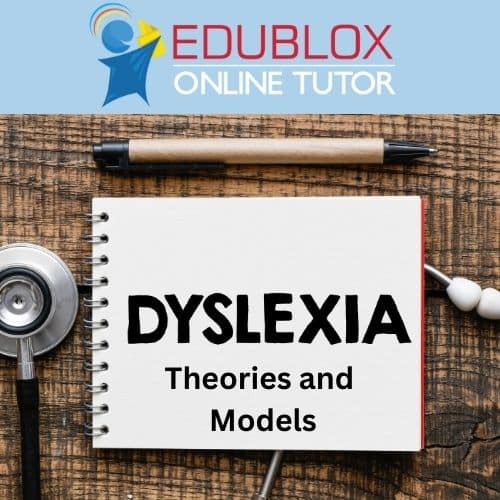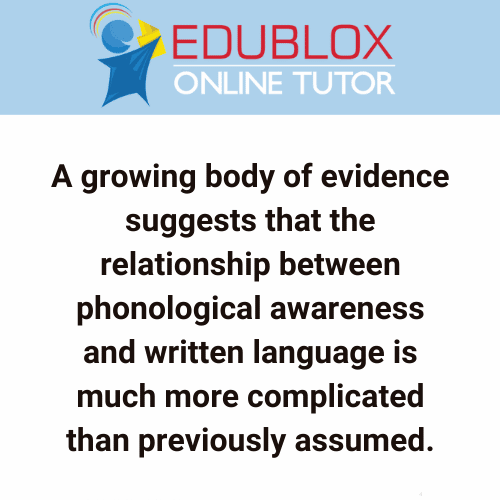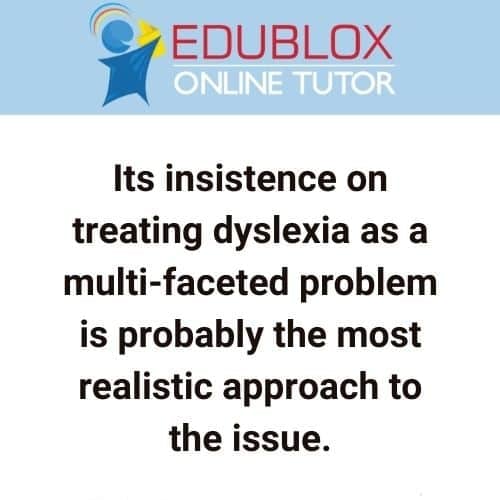
Six dyslexia theories and models are discussed: The discrepancy model, phonological deficit theory, magnocellular theory, rapid automatized naming, double deficit hypothesis, and the multiple deficit model that considers all the aspects that may contribute to dyslexia.
.
Table of contents:
- Introduction
- The discrepancy model
- Phonological deficit theory
- Magnocellular theory
- Rapid naming deficit
- Double deficit hypothesis
- Multiple deficit model of dyslexia
- The bottom line
Introduction
Six blind men came across an elephant. The first blind man ran into the elephant’s “sturdy side” and declared the animal a wall. The second felt the elephant’s tusk “so very round and smooth and sharp” and pronounced the elephant to be a spear.
The third felt the squirming trunk in his hands and proclaimed the elephant a snake. The remaining three blind men declared the elephant as, respectively, a tree trunk (based on the leg), a fan (based on the ear), and a rope (based on the tail).
Scholars in the learning disabilities field often invoke the parable of the “blind men and the elephant” to capture the state of the research literature on learning disabilities. Although there is no lack of research on the subject of learning disabilities and especially reading disabilities — or developmental dyslexia as it is commonly referred to — the theories, assessments, and treatment are so labyrinthine and contradictory as to cause one to throw one’s hands up in the air (Spear & Sternberg, 1986; MacConville, 2007; Waber, 2010; Kapur, 2011).
The term dyslexia was coined from the Greek words dys, meaning ill or difficult, and lexis, meaning word. It is used to refer to persons for whom reading is simply beyond their reach, accompanied by certain symptoms and signs:
- Reversals of letters like b and d;
- putting letters in the wrong order (reading felt as left);
- misreading little words (such as a for and);
- losing orientation on a line or page;
- reading aloud hesitantly, word by word;
- trying to sound the letters of the word but then being unable to say the correct word (for example, sounds the letters ‘c-a-t’ but then says cold); and
- reading with poor comprehension.
Spelling and writing are usually included due to their close relationship with reading.
Much of the labyrinthine and confusion regarding dyslexia may well be the result of researchers touching only a part or parts of the dyslexia elephant, missing the fact that it is a multiple deficit. Learning to read is a complex matter that relies on a conglomeration of cognitive functions, not only one or two (Pennington, 2006; Tamboer et al., 2016).
The discrepancy model
Traditionally, dyslexia has been defined in terms of a discrepancy between actual reading performance and what would be expected based on the child’s intelligence. The ‘true dyslexic’ was typically someone who, despite struggling with reading, is above average in intelligence (Elliott, 2015). When children are less intelligent, their reading troubles have been ascribed to their general intellectual limitations.
Research has shown that the distinction between the intellectually able dyslexic poor reader and the ‘garden-variety’ poor reader with an equally depressed cognitive profile is no longer tenable. Using brain imaging scans, Tanaka et al. (2011) found no differences between how poor readers with or without dyslexia think while reading. Poor readers of all IQ levels showed significantly less brain activity in six observed areas, such as the left parietotemporal and occipitotemporal regions. These findings were largely replicated by Simos et al. (2014).
Despite the wealth of scientific evidence against the discrepancy model, many clinicians and practitioners continue to diagnose on this basis (Elliott, 2015).
Phonological deficit theory

The idea that phonological weaknesses underlie dyslexia to some extent is a part of almost all theories about the causes of dyslexia. However, in its strongest form, the phonological deficit hypothesis proposes that a phonological deficit is the only cause of dyslexia. Children with good phonological skills, or good “phonological awareness,” become good readers and spellers. Conversely, children with poor phonological awareness will have difficulty remembering, recalling, and manipulating the sounds of their language.
A phonological deficit apparently causes symptoms such as difficulty identifying words that rhyme or breaking words up into their constituent sounds. As a child approaches school-going age, these weaknesses can impede literacy. Effective reading requires a child to master relationships between graphemes (written symbols) and phonemes (meaning-bearing units of sound in a language).
The notion that phonological deficits can completely account for dyslexia continues to be challenged, however. A growing body of evidence suggests that the relationship between phonological awareness and written language is much more complicated than previously assumed. For example, some studies have shown that learning to read actually influences a child’s ability to perform phonological awareness tasks.
Magnocellular theory
An alternative to the phonological deficit theory is the magnocellular theory. Magnocellular cells are neurons that form networks in parts of the brain. In particular, magnocellular cells involved in vision allow us to focus our eyes and counter the effect of motion or visual “noise.” According to this theory, reading difficulties like dyslexia have a physiological footprint: the magnocellular pathways of a person with dyslexia are underdevelopment or show abnormal development.
This theory recalls 19th and 20th-century models that construed dyslexia as a purely visual phenomenon, a point of view that gradually gave way to a more phonological understanding.
Although the magnocellular theory is not widely favored and has limited experimental support, visual deficits may play a role. Vision is crucial to reading, so it is a good idea to assess a child’s vision before testing for dyslexia. An optometrist or physician can administer a test to ascertain whether a child has normal eyesight.
Rapid naming deficit
Research on rapid naming, or rapid automatized naming, began with the work of Denckla and Rudel. Rapid automatized naming (RAN) refers to the speed with which one can retrieve the names of symbols (letters, numbers, colors, or pictured objects) from long-term memory. People with dyslexia score poorer on rapid automatized naming assessments than typical readers (Elliott & Grigorenko, 2014).
A meta-analysis of 137 studies of 28,826 participants indicated a moderate-to-strong relationship between RAN and reading performance. Further analyses revealed that RAN contributes to the four measures of reading: word reading, text reading, non-word reading, and reading comprehension. However, higher correlations emerged in favor of real-word reading and text reading. The authors conclude there is “still no consensus regarding the mechanisms responsible for this relationship” (Araújo et al., 2015, p. 869).
Double deficit hypothesis
As the name suggests, advocates of the double deficit hypothesis point to weaknesses in two distinct areas. The double deficit hypothesis is an extension of the phonological deficit hypothesis because it acknowledges the key role that phonological awareness plays in the act of reading. However, this hypothesis offers a more precise description of the problem.
According to this theory, weaknesses in phonological processing are not the only explanation for dyslexia. While many people with dyslexia do exhibit deficits in phonological awareness, there are also dyslexics who do not. In these cases, clinicians frequently observe weaknesses in rapid automatic naming (RAN).
While there may be significant overlap between these two types of dyslexia, it is also possible for a child to show deficits in only one skill and not the other. The double deficit hypothesis provides a way to evaluate various degrees of dyslexia. On this view, the double deficit (phonological and RAN) underlies the most severe form of dyslexia. Less severe is the case of a child who has a deficit in phonological processing but not RAN. Finally, a child with normal phonological awareness, but a weakness in RAN, is described as having a mild case.
Multiple deficit model of dyslexia
Recent developments in dyslexia research have led some to conclude that all previous models based on a single deficit are inadequate. One of the reasons for this is that dyslexia so often co-occurs with other cognitive disorders, such as dysgraphia and dyscalculia, as well as more behavioral disorders like ADHD. Building on this observation, the multiple deficit model seeks to come up with a way of accounting for dyslexia in a way that considers these correlations.

This theory suggests that a wide range of cognitive skills underlie reading. Because of this, a reading difficulty like dyslexia emerges through a highly complex interaction between these. Dyslexia can arise due to weaknesses in phonological awareness, the various types of memory, and even reasoning skills. In particular, working memory has received increasing attention as a skill that needs to be developed when treating dyslexia. All of these can contribute in a probabilistic way to a disorder like dyslexia.
This model has received criticism because it is difficult to test and falsify. Nevertheless, its insistence on treating dyslexia as a multi-faceted problem is probably the most realistic approach to the issue.
This model attempts to look at the whole elephant: vocabulary; focused, sustained, divided, and visual-spatial attention; visual, auditory, and phonological processing; rapid naming and processing speed; verbal, visual, auditory, sequential, iconic, short-term, long-term, and working memory; logical thinking; et cetera.
The role that memory may play in creating the dyslexia elephant is perhaps still underestimated. Nevertheless, it should clearly be considered a fundamental skill. Riding and Pugh found that visual sensory (iconic) memory is significantly related to fluency, accuracy, and comprehension. Guthrie and Goldberg identified significant, positive associations between visual sequential memory and paragraph comprehension, oral reading, and word recognition. Stanley, Kaplan, and Poole compared 33 dyslexic and 33 control eight- to 12-year-old children. They found the dyslexic children inferior to controls on tasks involving visual sequential and auditory sequential memory.
A study, published in Dyslexia, compared the performances of 60 dyslexic children to that of 65 age-matched typical readers on verbal, visual-spatial, and visual-object tasks. Results documented a generalized impairment of long-term memory capacities in dyslexic children. The findings indicate that the long-term memory deficit in dyslexia is not limited to the dysfunction of phonological components but also visual and spatial material, thus suggesting that dyslexia is associated with multiple cognitive deficits (Menghini et al., 2010).
Weiss et al. (2014) tested dyslexic and non-dyslexic musicians on auditory processing and auditory memory. Dyslexic musicians scored as well as their non-dyslexic counterparts in auditory processing tasks and better than the general population. However, they performed much worse on tests of auditory working memory, including memory for rhythm, melody, and speech sounds. Moreover, these abilities were intercorrelated and highly correlated with their reading accuracy, which means that the dyslexic musicians with the poorest auditory working memory tended to have the lowest reading accuracy.
One should also consider the role of mutualism. A mutualistic view suggests that cognitive abilities mutually facilitate growth. For example, better reasoning skills allow individuals to improve their vocabulary more quickly, and better vocabulary is associated with faster improvement in reasoning ability (Kievit et al., 2017). Vocabulary size has also been shown to be strongly related to the child’s degree of phonological awareness. Likewise, cognitive abilities such as nonverbal intelligence and working memory capacity are related to performance in phonological awareness tasks. Perhaps improving vocabulary, nonverbal intelligence, and working memory would improve phonological awareness and vice versa.
The bottom line
The elephant is an enormous animal. Each blind man was touching only one part. To learn the truth, they must put all the parts together.
Given that a single deficit is not sufficient to explain the cause of developmental dyslexia, has it not become time for all learning disability practitioners to consider a multiple deficit model?

Edublox offers live online tutoring to students with dyslexia and other learning difficulties. Our students are in the United States, Canada, Australia, and elsewhere. Book a free consultation to discuss your child’s learning needs.
.
References and sources:
Araújo, S., Reis, A., Petersson, K. M., & Faísca, L. (2015). Rapid automatized naming and reading performance: A meta-analysis. Journal of Educational Psychology, 107(3): 868–883.
Denckla, M. B., & Rudel, R. G. (1976). Rapid ‘automatized’ naming (R.A.N.). Dyslexia differentiated from other learning disabilities. Neuropsychologia, 14: 471-9.
Dickinson, D., McCabe, A., Clark-Chiarelli, N., & Wolf, A. (2004). Cross-language transfer of phonological awareness in low-income Spanish and English bilingual preschool children. Applied Psycholinguistics, 25: 323-47.
Elliott, J. G., & Grigorenko, E. L. (2014). The dyslexia debate. Cambridge: Cambridge University Press.
Elliott, J. G. (2015). The dyslexia debate: Actions, reactions, and over-reactions. Psychology of Education Review, 39(1): 6-16.
Fern-Pollak, L., & Masterson, J. (2016). Dyslexia and the English writing system. In V. Cook & D. Ryan (Eds.). The Routledge handbook of the English language (pp. 223-34). New York: Routledge.
Foy, J., & Mann, V. (2001). Does strength of phonological representations predict phonological awareness in preschool children? Applied Psycholinguistics, 22: 301-25.
Goodman, I., Libenson, A., & Wade-Woolley, L. (2010). Sensitivity to linguistic stress, phonological awareness and early reading ability in preschoolers. Journal of Research in Reading, 33: 113-27.
Goodrich, J. M., & Lonigan, C. J. (2014). Lexical characteristics of words and phonological awareness skills of preschool children. Applied Psycholinguistics, 1-23: DOI: 10.1017/S0142716414000526
Guthrie, J. T., & Goldberg, H. K. (1972). Visual sequential memory in reading disability. Journal of Learning Disabilities, 5(1).
Kapur, M., (2011). Counselling children with psychological problems. Bangalore: Pearson Education.
Kievit, R. A., Lindenberger, U., Goodyer, I. M., Jones, P. B, Fonagy, P., Bullmore, E. T., & Dolan, R. J. (2017). Mutualistic coupling between vocabulary and reasoning supports cognitive development during late adolescence and early adulthood. Psychological Science, 28(10): 1419-31.
MacConville, R. (2007). Looking at inclusion: Listening to the voices of young people. London: Paul Chapman Publishing.
McBride-Chang, C. (1995). What is phonological awareness? Journal of Educational Psychology, 87: 179-92.
Menghini, D., Carlesimo G. A., Marotta, L., Finzi, A., & Vicari, S. (2010). Developmental dyslexia and explicit long-term memory. Dyslexia, 16(3): 213-25.
Oakhill, J., & Kyle, F. (2000). The relation between phonological awareness and working memory. Journal of Experimental Child Psychology, 75: 152-64.
Pennington, B. F. (2006). From single to multiple deficit models of developmental disorders. Cognition, 101(2): 385-413.
Riding, R. J., & Pugh, J. C. (1977). Iconic memory and reading performance in nine‐year‐old children. British Journal of Educational Psychology, 47(2).
Shaywitz, S. (2005). Overcoming dyslexia. New York: Vintage Books.
Simos, P. G., Rezaie, R., Papanicolaou, A. C., & Fletcher, J. M. (2014). Does IQ affect the functional brain network involved in pseudoword reading in students with reading disability? A magnetoencephalography study. Frontiers in Human Neuroscience, 7(932).
Spear, L. C., & Sternberg, R. J. (1986). An information processing-framework for understanding reading disability. In S.J. Ceci (Ed.). Handbook of cognitive, social, and neuropsychological aspects of learning disabilities, Volume 2 (pp. 3-32). Hillsdale, NJ: Erlbaum.
Stanley G., Kaplan I., & Poole C. (1975). Cognitive and nonverbal perceptual processing in dyslexics. Journal of General Psychology, 93(1): 67-72.
Stein, J., & Walsh, V. (1997). To see but not to read: the magnocellular theory of dyslexia. Trends in Neuroscience, 20: 147-52.
Tamboer, P., Vorst, H. C. M., & Oort, F. J. (2016). Five describing factors of dyslexia. Journal of Learning Disabilities, 49(5): 466-83.
Tanaka, H., Black, J. M., Hulme, C., Stanley, L. M., Kesler, S. R., Whitfield-Gabrieli, S., Reiss, A. L., Gabrieli, J. D. E., & Hoeft, F. (2011). The brain basis of the phonological deficit in dyslexia is independent of IQ. Psychological Science, 22(11): 1442-51.
Waber, D. P. (2010). Rethinking learning disabilities: Understanding children who struggle in school. New York: The Guilford Press.
Weiss, A. H., Granot, R. Y., Ahissar, M. (2014). The enigma of dyslexic musicians. Neuropsychologia, 54: 28-40.
Wolf, M., & Bowers, P. G. (1999). The double-deficit hypothesis for the developmental dyslexia. Journal of Educational Psychology, 91: 415-38.



